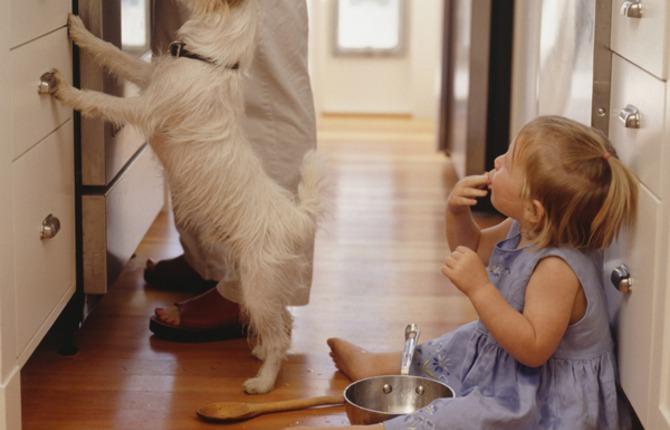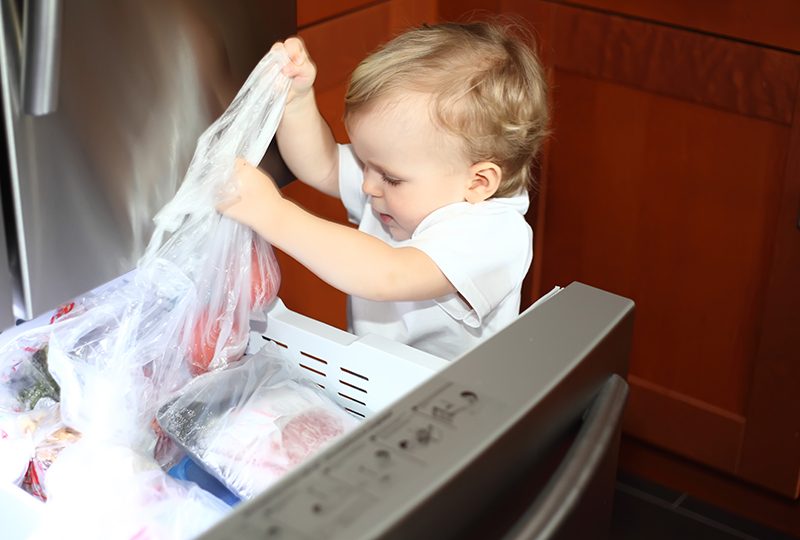
How to doggy-train your toddler
By Vanessa Lupton
For many when they picture their “perfect” family, they envision a partner, children and the family dog, a loveable, happy-go-lucky four-legged family member who will be a best friend to the children.
Whether your dog comes before the baby and toddler stage, or if you decide to add a dog into the family when your children are tots, how do you create a safe environment where both dog and toddler will be set up for success?
As with the introduction of a baby, advancing to the toddler stage can be troublesome for some dogs, leading to undesired behaviours. While many of the concerns surrounding dogs and a new baby are based on sound, scent and volume of attention, the challenges surrounding toddlers and dogs are based around physical contact as your little one learns to toddle his or her way around the home. A suddenly mobile child will become more hands-on with the dog, which may lead to fear and discomfort for your pet.
Why dogs bite
To begin, it’s important to understand why a dog may bite and what the warning signs were that occurred leading up to a bite. The idea that a dog will bite or attack without warning is often misguided, rather, we as the humans did not understand the signals that were given prior to the biting incident.
According to Doggone Safe, an organization that strives to educate about bite safety through education, a dog may bite for a number of reasons. He or she may feel possessive about an item, may be startled (for example touched when sleeping), something has been done to make the dog feel frightened or uncomfortable (being hugged or grabbed suddenly), or even overexcitement from rough play.
What we often don’t see or understand is the body language that has occurred prior to that bite. While they may be subtle, there will always be a warning sign before a bite occurs, so it is important for pet owners who are parents to understand not only their dog’s behaviour, but also some of the basic canine behaviours that are often seen in situations when a dog is feeling uncomfortable. So often parents are heard claiming that their children regularly climb on, grope, poke, prod and pull at the family dog, and are then surprised when one day the dog bites, yet the warning signs may have been progressing throughout the entire time.
Warnings that should be taken very seriously include your dog getting up and moving away from the child, turning his or her head away, and looking at you with a pleading expression. Some more advanced warnings include the whale eyes, a term that is used to describe a dog’s body language when you can see the whites of his or her eyes while fixating on something or someone, lip licking while the child is interacting with him or her, suddenly scratching, biting or licking oneself, and doing a vigorous “wet dog shake” when the child stops touching him or her.
In addition to really paying attention to your dog’s behaviour when interacting with your child, there are some steps that you can take to try to create a safe environment. It is particularly important to remember that dogs do not like hugs and kisses, and that children and pets should never be left alone unsupervised.
So how can you create an environment where your child gets the enrichment of life with a dog, but without making your dog feel unsafe or uncomfortable?
1. Do use a gate to create safe spaces for your dog and child. Don’t allow your toddler access to your dog’s food, toys, bed or treats.
2. Do plan interaction time between your dog and child that is controlled and supervised. Don’t allow your toddler and dog to play alone at any time.
3. Do invite your dog over to you and your toddler while providing positive reinforcement. Don’t allow your toddler to approach your dog.
4. Do put your dog in a bedroom or a crate if utilizing a babysitter. Don’t expect the babysitter to supervise both the toddler and the dog,
5. Do teach your child how to pet the family dog. Don’t allow the toddler to climb on, poke, hug, kiss, stand on or grab at the dog.
Doggone Safe works to increase safety and decrease stress in homes where dogs and toddlers are learning to live together. Their resources are designed to educate parents and pet owners about canine behaviour, raising awareness and educating parents on how to safely raise dogs and children together, and to reduce dogs surrendered to shelters due to preventable canine conflicts.
For more information on the resources available, visit www.doggonesafe.com







